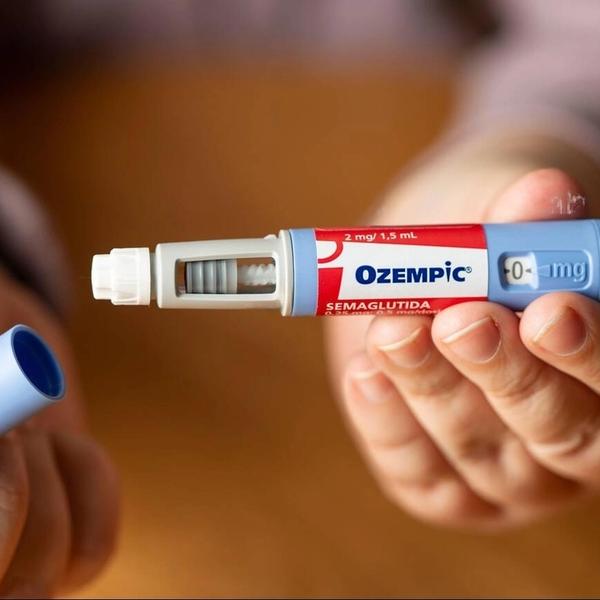How Long Does Nausea Last With Wegovy?

Wegovy (semaglutide) is a breakthrough medication for chronic weight management, approved for adults with obesity or overweight conditions accompanied by weight-related health issues. While effective, nausea is the most frequently reported side effect, affecting 44% of adults. This guide offers an in-depth look at why Wegovy causes nausea, how long it lasts, and actionable strategies to manage it—helping you stay on track with your weight loss journey.
Disclaimer: This article is for informational purposes only and does not constitute medical advice. Always consult with a qualified healthcare provider for medical diagnosis and treatment. The information provided is current as of March 2025 but medical knowledge evolves rapidly. Readers should verify any critical information.
Quick Facts: Wegovy-Induced Nausea at a Glance
- Medication: Wegovy (semaglutide) is used for weight management.
- Common Side Effect: Nausea affects up to 44% of patients.
- Mechanism: Slowed gastric emptying and activation of GLP-1 receptors contribute to nausea.
- Duration: Most patients experience nausea for 8-12 weeks, with improvement seen after 4-5 weeks in many cases.
- Management Tips:
- Start with a low dose and increase gradually.
- Eat smaller, more frequent meals.
- Avoid high-fat, spicy, and acidic foods.
- Stay hydrated with small sips of water.
- Consider anti-nausea medications if necessary.
- Consultation: Always discuss persistent or severe symptoms with your healthcare provider.
Why Does Wegovy Cause Nausea?
Wegovy belongs to the GLP-1 receptor agonist class, which mimics the gut hormone GLP-1 to regulate appetite and slow gastric emptying. While this mechanism promotes satiety and weight loss, it can also trigger nausea through:
- Delayed Gastric Emptying: Food remains in the stomach longer, leading to fullness and discomfort.
- Central Nervous System Effects: GLP-1 receptors in the brainstem may directly induce nausea.
- Dietary Adjustments: Reduced appetite can cause overeating discomfort if portion sizes aren’t adjusted.
How Common Is Nausea with Wegovy?
Clinical trials reveal dose-dependent nausea rates for Wegovy's active ingredient, semaglutide:
| Wegovy Dose | Nausea Incidence |
|---|---|
| 0.5 mg | 15.8% |
| 1.0 mg | 20.3% |
| 2.4 mg | 44% |
Nausea typically peaks during dose escalation and subsides as the body adapts.
How Long Does Wegovy-Induced Nausea Last?
Timeline Breakdown:
- Initial Weeks (1–4): Most common when starting or increasing doses. Symptoms often resolve within 3–5 days.
- Dose Escalation Phase (5–20 weeks): Nausea may recur but usually diminishes after 8–12 weeks.
- Maintenance Phase (20+ weeks): Most users report significant improvement, with only 10–15% experiencing persistent nausea.
Key Factors Influencing Duration:
- Dosage Strength: Higher doses correlate with longer-lasting symptoms.
- Individual Tolerance: Genetic and metabolic differences affect adaptation speed.
- Hydration and Diet: Poor hydration or high-fat meals may prolong nausea.
- Underlying Health Conditions: Kidney/liver issues slow semaglutide excretion.
Strategies to Manage Wegovy Nausea
1. Start Low, Go Slow
- Follow the recommended titration schedule (0.25 mg → 2.4 mg over 16–20 weeks).
- If nausea persists, ask your provider about extending the current dose.
2. Optimize Meal Timing and Size
- Eat Small, Frequent Meals: Aim for 5–6 mini-meals daily.
- Avoid Overeating: Stop eating at the first sign of fullness.
- Bland Foods: Try the BRAT diet (bananas, rice, applesauce, toast).
3. Avoid Trigger Foods
- Steer clear of fatty, greasy, spicy, or acidic foods.
- Limit caffeine, alcohol, and carbonated beverages.
4. Hydrate Smartly
- Sip water or electrolyte drinks slowly throughout the day.
- Avoid drinking 30 minutes before/after meals to prevent fullness.
5. Incorporate Anti-Nausea Remedies
- Ginger: Chew ginger candies or drink ginger tea.
- Peppermint: Use peppermint oil or tea to soothe the stomach.
- OTC Medications: Try Pepto-Bismol or Emetrol (with provider approval).
6. Prescription Medications
- Medications like ondansetron (commonly known by the brand name Zofran) may be prescribed by your doctor to help manage severe nausea.
7. Adjust Injection Timing
- Injecting Wegovy on an empty stomach may exacerbate nausea effects due to its potential to induce hypoglycemia.
8. Track Symptoms
- Use a journal to identify food, timing, or activity triggers.
When to Seek Immediate Medical Attention
While Wegovy-induced nausea is often temporary, there are certain situations where you should seek medical attention immediately:
- Severe or Persistent Nausea: If nausea lasts longer than 4-5 weeks or worsens over time.
- Inability to Eat or Stay Hydrated: Persistent nausea that prevents you from maintaining a healthy diet or adequate hydration.
- Other Symptoms: Look out for signs of more serious conditions such as pancreatitis or gallbladder issues. These may include:
- Severe, sharp stomach pain that radiates to your back
- Persistent vomiting or inability to keep fluids down
Long-Term Outlook
Most users adapt to Wegovy within 3–6 months, with nausea resolving as the body adjusts. In clinical trails, fewer than 7% of adults discontinued therapy due to side effects.
FAQs
Q: Can I take Wegovy if I have a history of motion sickness?
A: Yes, but inform your provider. They may recommend preemptive anti-nausea measures.
Q: Does injecting Wegovy in a specific site reduce nausea?
A: No—subcutaneous absorption is consistent across injection sites (abdomen, thigh, arm).
Conclusion
Nausea with Wegovy is common but temporary for most users. By adjusting your diet, staying hydrated, and leveraging anti-nausea strategies, you can minimize discomfort and focus on long-term weight management. Always collaborate with your healthcare provider to tailor solutions to your needs. If you experience severe or prolonged side effects, reach out to your provider immediately.
Consult your doctor before starting or adjusting any medication. This article is for informational purposes and does not replace professional medical advice.

